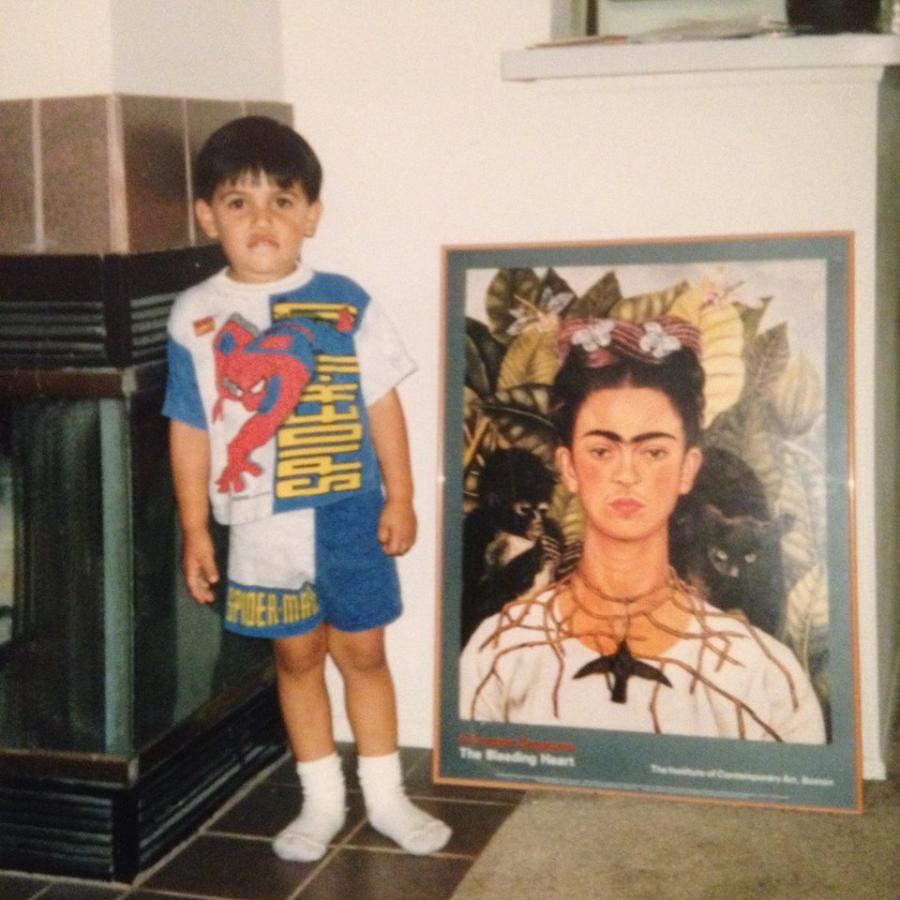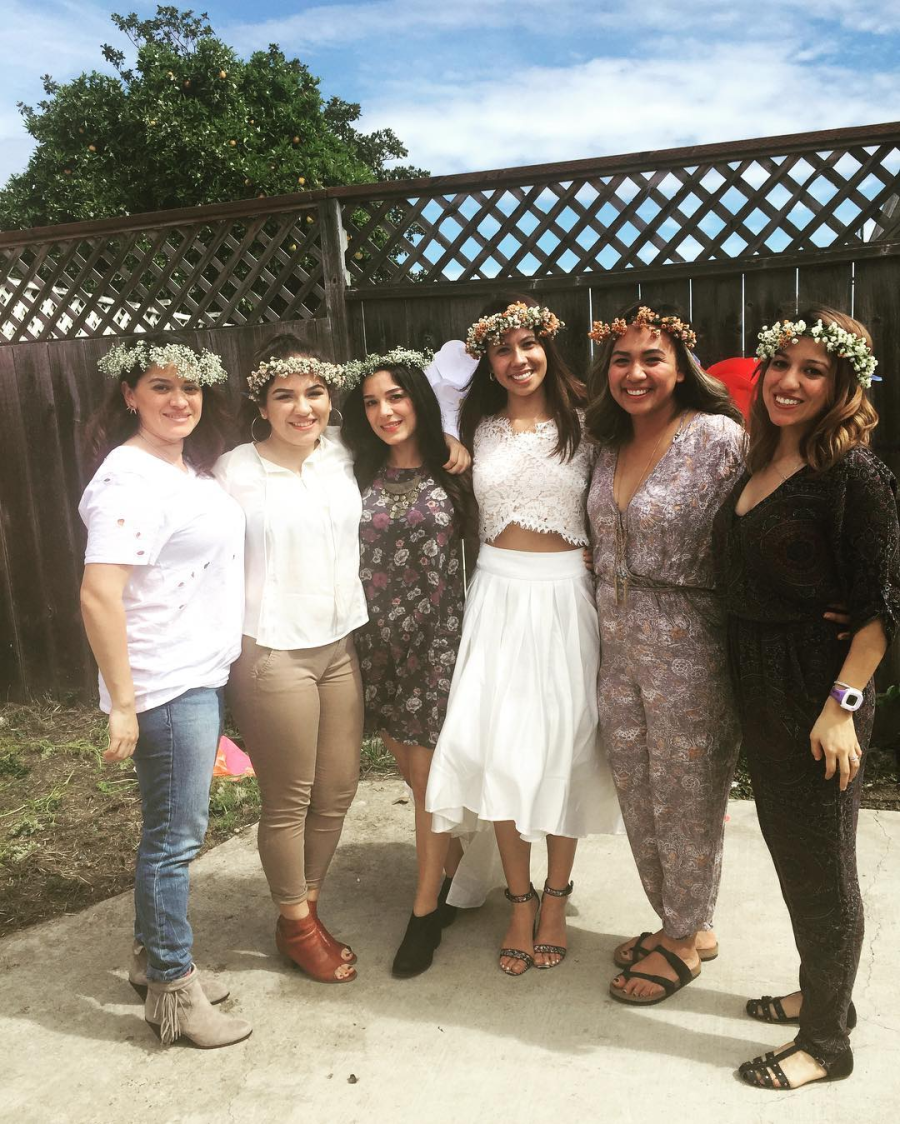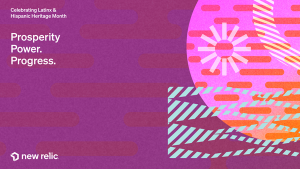As members of the Latinx community, the way we identify ourselves, and the language we use to identify ourselves, is always changing. It can change from day to day, and even based on the places we occupy and the people we are talking to. For Hispanic Heritage Month, we’re taking a look at the labels we use, the history of these labels, and our personal experiences with them.
We aren’t Chicano Studies professors, so the words we use may not be academically correct. We’re still trying to find the correct words ourselves, and we also recognize that the ways we identify ourselves don’t apply to many others in the Latinx community. These are our personal stories with these labels.
So who are we?
Ariane Evans is an Associate Social Impact Program Manager at New Relic. She also co-leads the Relics of Color employee resource group for people of color. She’s been a part of community organizing and philanthropic programs in the Bay Area and as an Oakland native, she has deep appreciation for cultural histories. As a woman of color, she is dedicated to creating more equitable futures for people of color, children of immigrants, and others from historically underserved communities, especially regarding access to technology.
Danny Ramos is a Developer Relations Engineer at New Relic. He graduated film/theatre school from the University of Colorado Denver in 2014. He then went on to contribute in local productions and was awarded for his work alongside the Black Actors Guild, a Denver-based education and production company. After years of being part of the art community, he went to the Turing School of Software and Design where he learned backend software development.
Let’s take a look at some labels and their history, and then we’ll talk more about the labels we use to identify ourselves.
Hispanic
Hispanic is an abbreviation of “Hispano Americano” and indicates Spanish-speaking descendants from Spanish settlers living in the US.
In 1968, the National Council De La Raza, a U.S. non-profit now known as UnidosUS, lobbied the American government for a term—Hispanic—that would unite these varied groups. At the time, it was important to distinctly separate Spanish-speaking Americans from other Americans, as their needs were different. This was part of a movement to create a Hispanic agenda, uniting these various Spanish-speaking groups.
Together, these many communities could be stronger as a united community. Colombian, Mexican, and Dominican families all raising second-generation immigrant children or passing on the Spanish language and traditions. Tu lucha es mi lucha.
However, the term Hispanic has also been criticized because it promotes Spanish heritage and the violent colonization of our countries and the eradication of Afro-Latinos and Indigenous people. Hello, racism. For that reason, Hispanic isn’t truly inclusive for many black and brown people.
Latino/Latina/Latinx
Latino and Latina are abbreviations of “Latino Americano” and indicate ancestral lineage from Latin America. The term includes Spanish-speaking and indigenous people as well as Brazilians. There’s also the term Latinx, a gender-neutral/non-binary alternative, and Latine, which has a similar meaning as Latinx.
The origin of Latino is not as clear as Hispanic, even though we’ve spent a lot of time sifting through el Google. We do know that Latino is meant to be a more inclusive word to describe our communities. In metropolitan areas of America, the term Latino helped bring change by unifying larger populations of Mexican and Puerto Rican people. For several decades, Latino was recognized as a more progressive choice than Hispanic.
In recent years, the term Latinx has gained momentum. While it was intended to be a gender-neutral alternative, there is an issue—substituting the O for the X unnecessarily complicates the Spanish language. Journalist Ed Morales from Columbia University’s Center for the Study of Ethnicity and Race writes, “The advent of the term Latinx is the most recent iteration of a naming debate grounded in the politics of race and ethnicity.”
While the term can easily be misunderstood and mispronounced, it does help non-binary people feel seen.

Danny, Spiderman, and Frida Kahlo.
How do we identify ourselves?
Danny Ramos: I am Mexican
Nicknames are big in my family. A nickname in a Mexican family is meant to embarrass and harass you. In a loving way… I think. As a baby, I was called Quesito, or Little Cheese. Cute, right? This started because I’d fall asleep with my bottle in my neck, and in the Oxnard sun the milk would curdle, causing milk cheese to form in my neck creases. This name stuck with me for years, then it was Jaws for my bad teeth, “Frijoles” because I said it wrong once, and sometimes not even a name at all. My family would yell “I want some cake” to remind me of the time I was an angry baby on my birthday. Language is not only how we communicate, but it also represents our stories.
Growing up, many of us encounter the question, “Where are you from?” In Oxnard, California, where I’m from, it was enough to say, “I am Mexican.” But then my family moved from Oxnard, where 74% of the population is Hispanic, to Parker, Colorado, where the Hispanic population is 10%. When I told people in Parker that I was from Oxnard, people would sometimes ask, “No, I mean where is your family from?” I was only being asked that question because I'm brown. Regardless of the intentions behind that question, the answer is complex. How do I identify myself and my family? Hispanic Heritage Month aims to celebrate the offerings and community of Hispanic Americans, but what does the term Hispanic American even mean?
My mom was born in Tijuana, Mexico, which she proudly calls Baja California. I don't really know my biological dad, but I’ve heard he’s Mexican also. The man I call Dad is from Iran. So, I was really popular in my white suburban neighborhood in the 2000s. I remember having dinners at friends’ houses and answering questions like, “Does your mom speak English?” or “What does your dad think of 9/11?” For the second question, I’d always answer the same way, “Uhhh, yes, he thinks it's sad. Can I have more macaroni salad please?”
I don’t know Spanish, so I’ve always felt weird using the terms Latino or Chicano. To me, those terms felt exclusive to Spanish speakers. In my suburban community, I was Mexican, but as I met more Latinx folks, I was the white boy because I didn't know Spanish and liked “emo” music.
Out of habit, I still describe myself as Mexican even as I’ve learned more about my heritage. My mom was upset that she spent money to find out that her 23 and Me DNA test told her exactly what she already knew. She’s Portuguese, Spanish, and an indigenous person of Mexico. She tells me that I’m more indigenous and that is why I tan so nicely. I just smile and say, “Okay, mom.” Truthfully, I had never heard of “Latinx” until I entered the tech community. I was always “the Mexican kid,” and my mom would say she was from La Colonia in Oxnard.
For many of us, we’re the first in our family to work in tech. We make more money than our parents, and often we are the only brown faces in Zoom meetings. The ability to be transparent with our cultural identity is a power to connect us to each other and our histories while we engineer our future. Imagine you have the power to design an inclusive culture.
Initially, I was hesitant to use Latinx because I wasn’t sure where the word came from. Who was using it? I had heard scholars describe it as the colonization of the Spanish language. So much has been taken from our communities in the past—what would happen if the language we used to identify ourselves changed, too? Then I realized that language is constantly evolving. In 1980, “Hispanic” was the most common term used to describe the Latinx population. In the 2000s, it was Latino, and now in 2021, we find ourselves using Latinx. In 2060, I may find myself an old bitter man saying, “Oh, when I was young we used Latinx!” But if these changes lead to more inclusive language, then I see it as a beautiful thing.

Ariane and her primas.
Ariane Evans: Soy Chicana, mestiza, Latina, Mexican (and Filipino)
Ariane, Emilia, Padaong de Tovar. Until I was married, Ariane, Emilia, Padaong de Evans. Perhaps that is how we’ve come to collect so many labels. I can add nicknames to that, too:, Flaca, Ari. The labels sometimes feel like they change depending on the room and the people in it. Today, it’s about embracing the labels I choose to accept for who I am and who I am becoming.
My family is blended. A whole stew of spices. My mother’s side is from Mexico. However, as migrant workers in Texas they identified as Tejano, proud Mexican-Americans in Texas. This assimilation was meant to protect them. To be a proud Texan at the time was better than being a proud Mexican. As migrant workers, my family made their way across California and settled in Oakland.
Growing up, there was a complex understanding of what it meant to be a Mexican-American and the subculture of Chicano pride in California. The term Chicano arguably came as a derivative of “Meschica,” the original empire that ruled America and most of the southwest. “Meschicano” or “Chicano”, groups indigenous people of the land of Aztlan, the southwest area of America. Xicano, with an X, were the head jaguar eagle warriors of the mexica (meschica), the best of the best. There’s debate that Chicano may have been slang. If that is the case, it originated from the Chicano Movement that was politically empowered to fight for civil rights and advance the needs of Latinos in America related to culture, history, and literature.
Generationally, there have been so many labels that are both self-chosen or from the government or other citizens. It can sometimes seem like America is focused on Black and White, so where do you fit if you’re brown?
Soy Chicana
To me, being Chicana means being an American with Latino roots. I was born in America and I support the culture and tradition of my ancestral comunidad. In my experience, though, the term Chicana is not used much anymore because it is associated with harmful stereotypes, toxic displays of masculinity, machismo, and the exclusion of those who are mixed race and from the LGBTQ+ community. To me though, it means embracing the heart of a warrior and empowering your comunidad. Tu luche es mi lucha y yo contigo.
Soy mestiza
In Spanish, there is the word “mestiza” to describe a person of mixed race. When I was young, mestiza was my identifying label. Soy mestiza, una Chicana y Filipina. In fact, all Spanish-speaking people not from Spain were once considered mestizo because we are descended from Spanish colonizers and indigenous people. Like the Hispanic label, mestizo label comes with the same violet history of Spanish colonization.
Soy Latina
As I joined different spaces with variations of Latinos that were not all Chicanos and not all Mexican, I learned to operate with a label that was easier for others to identify. I went to college in New York City, where many communities of color are close together and blended, and that was new for me. There were Dominicanas, Salvadoreños, Boricuas, Brasilenos, Afro-Latinos, and so many other communities. When I am among people who are also from countries from Latin America, I feel connected in a way that makes me proud to speak Spanish in the room and laugh about how arroz con frijoles o gandules is so simple and so different at home.
Conclusion
Heritage Month is a time to reflect on and recognize the journey of our people, including the ways we've named and labeled ourselves. These labels are complex and ever-changing, but the same is true for our histories, too—both of our people and ourselves.
There isn’t a perfect word to group us all together, especially when we all have different identities. We keep all of our names, many names, and we hold onto our roots strong. We may have ten names because of our family blending and history, but that’s how we remember the recipe of who we are, all of the spices included.
To learn about New Relic and view open roles, visit newrelic.com/careers.
The views expressed on this blog are those of the author and do not necessarily reflect the views of New Relic. Any solutions offered by the author are environment-specific and not part of the commercial solutions or support offered by New Relic. Please join us exclusively at the Explorers Hub (discuss.newrelic.com) for questions and support related to this blog post. This blog may contain links to content on third-party sites. By providing such links, New Relic does not adopt, guarantee, approve or endorse the information, views or products available on such sites.



